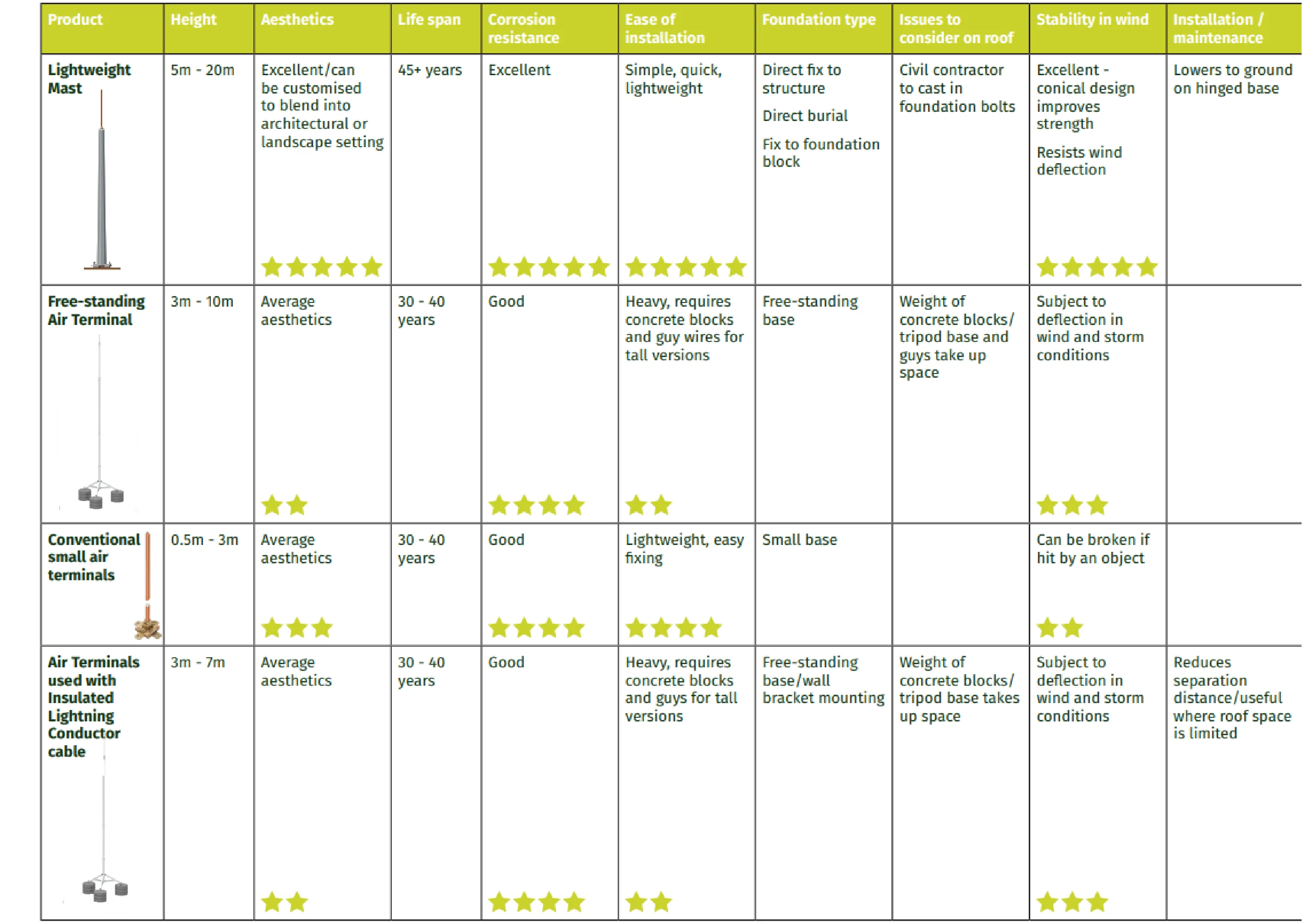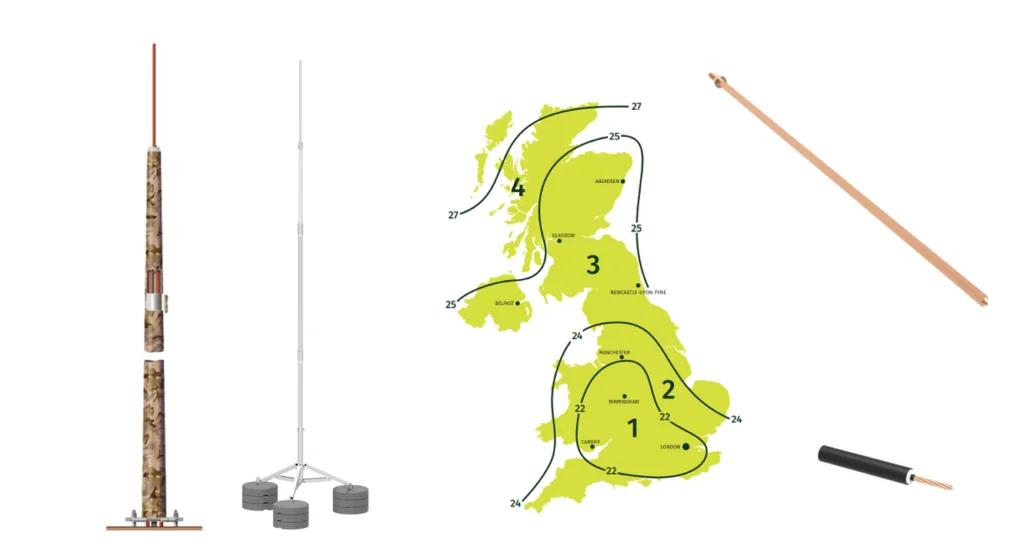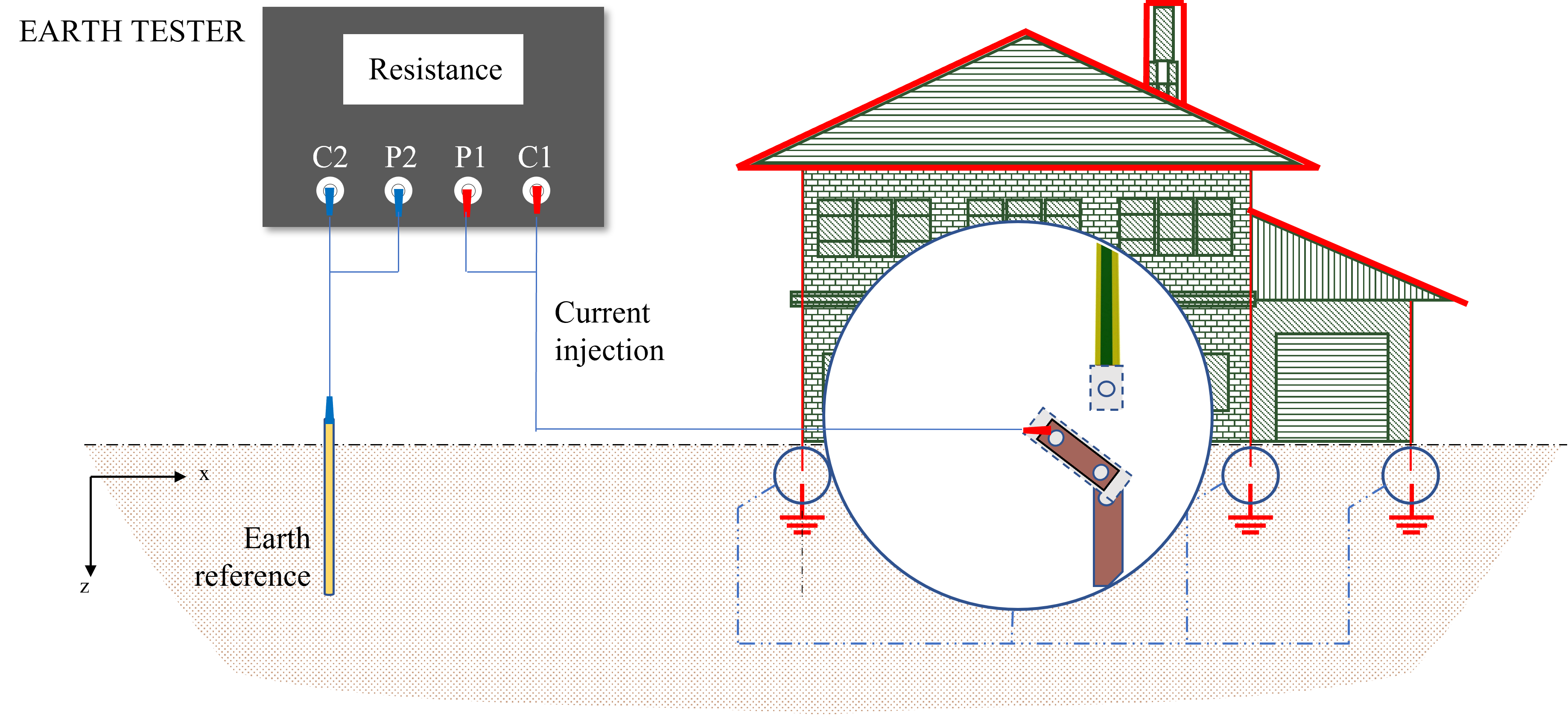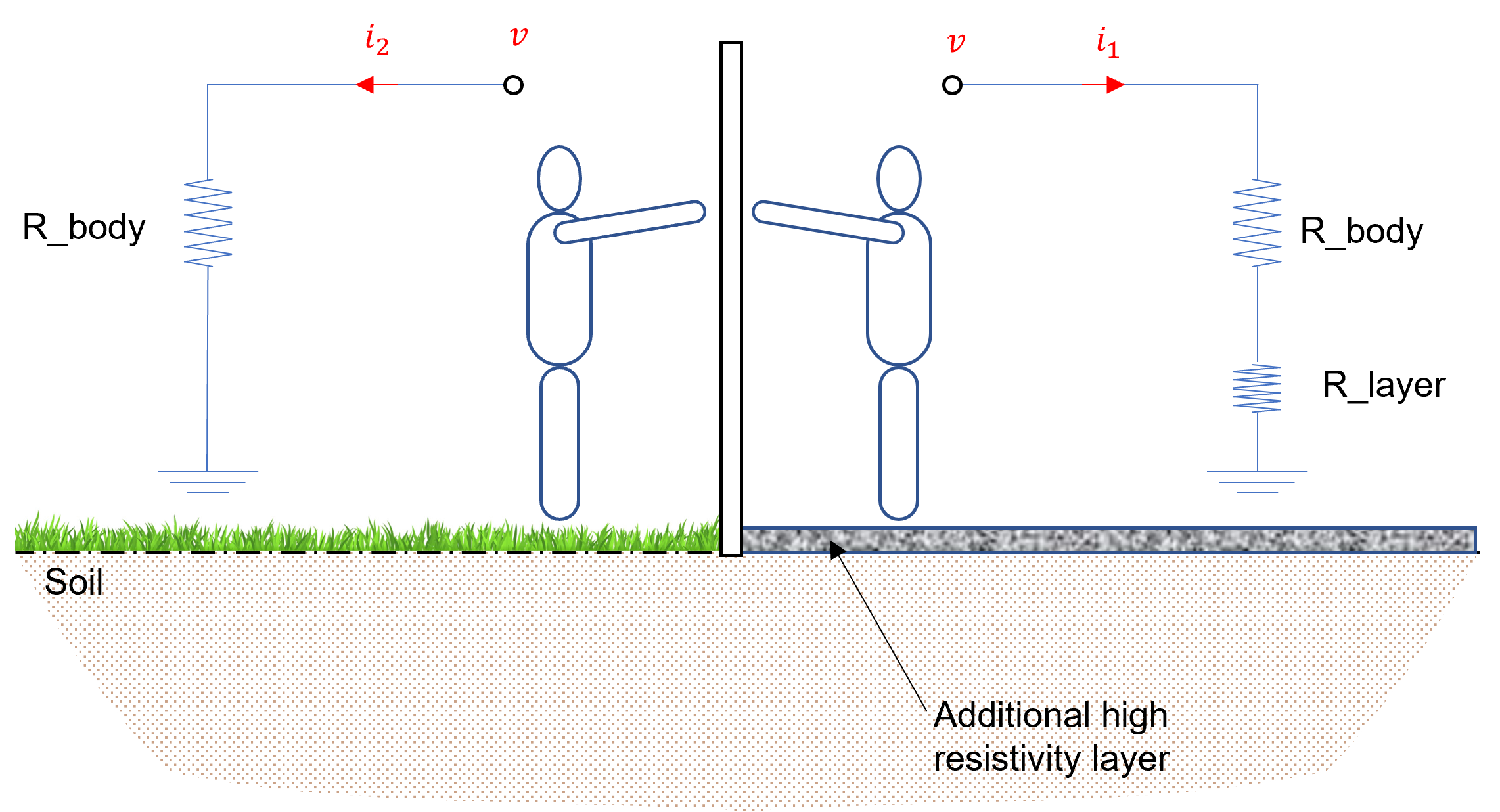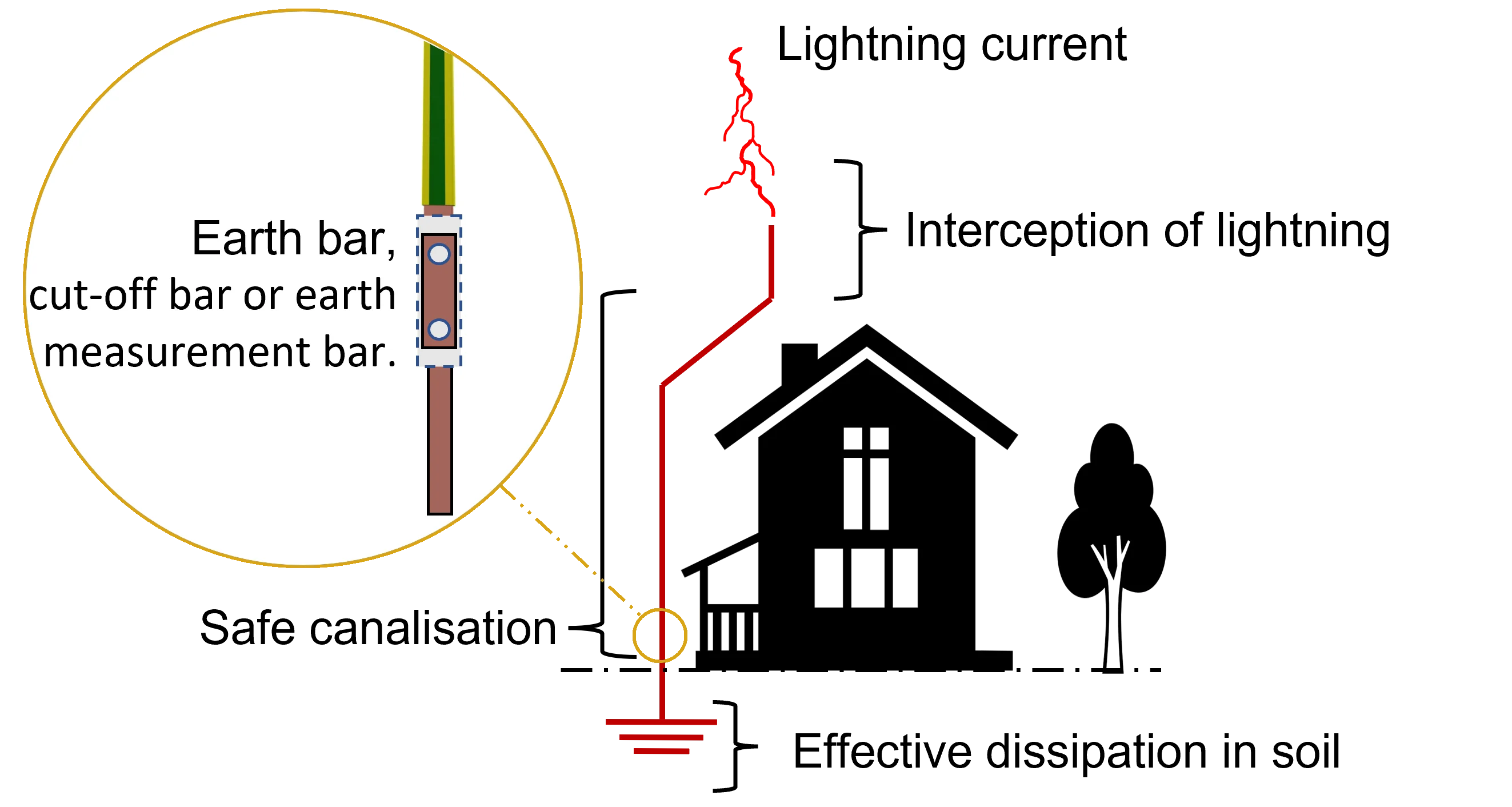Hello, the answer to this one is quite easy ….. YES!
You will be happy to note that we at Kingsmill Industries have an enviable range of Lightning Masts, or as some people might know them, Lightning Interception Poles.
We offer
- Conventional(light duty), 05 to 2.5m high masts known as Air Terminals
- Free-standing masts from 1 to 10m in height
- Lightweight GRP mast 5.5 to 22.5m high
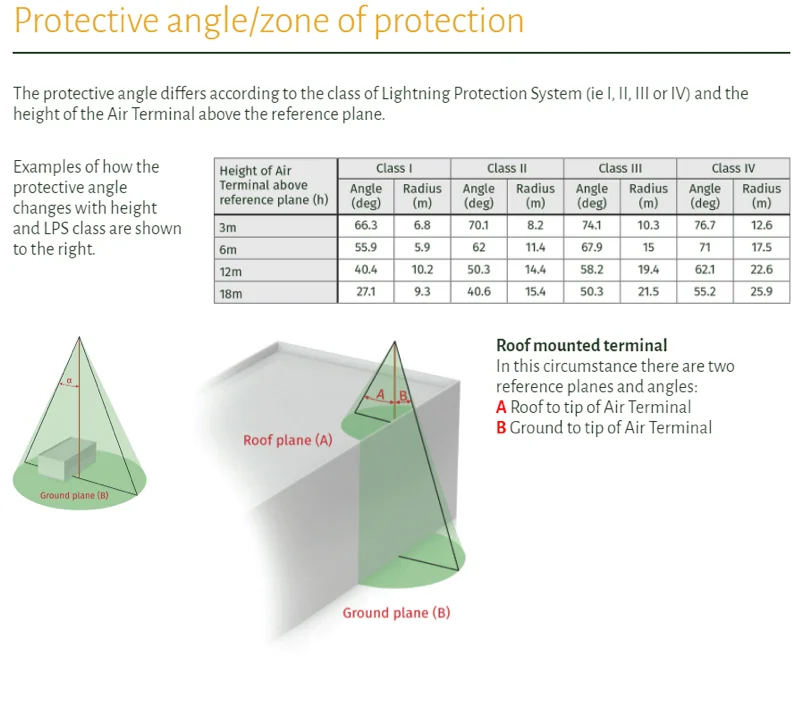
These have been used by our customers around the globe for many years and they are the most commonly seen type of Air Terminal. Typically, they are constructed from either solid aluminium or copper rod that is connected to an air terminal base, which in turn is fixed using screws and plugs.
Some customers and designers, particularly in the Middle East and Asia like to enhance the air terminal by adding a multi pointed top to the air terminal, though it can be noted that,
“field trial tests carried out in the USA over many years, confirm that blunt air rods are struck by lightning in preference to taper pointed rods” – Lightning Rod Improvement Studies by C B Moore, W Rison, J Mathis, & G Aulich – Journal of Applied Meteorology, May 2000.
You will notice from pages in our catalogue (AT14 to AT20), that we can provide you with flat surface, tiled roof as wall fixings to suit most of your installation applications. Within this range we also offer a low profile, dome shaped terminal that is particularly useful for car park roofs.
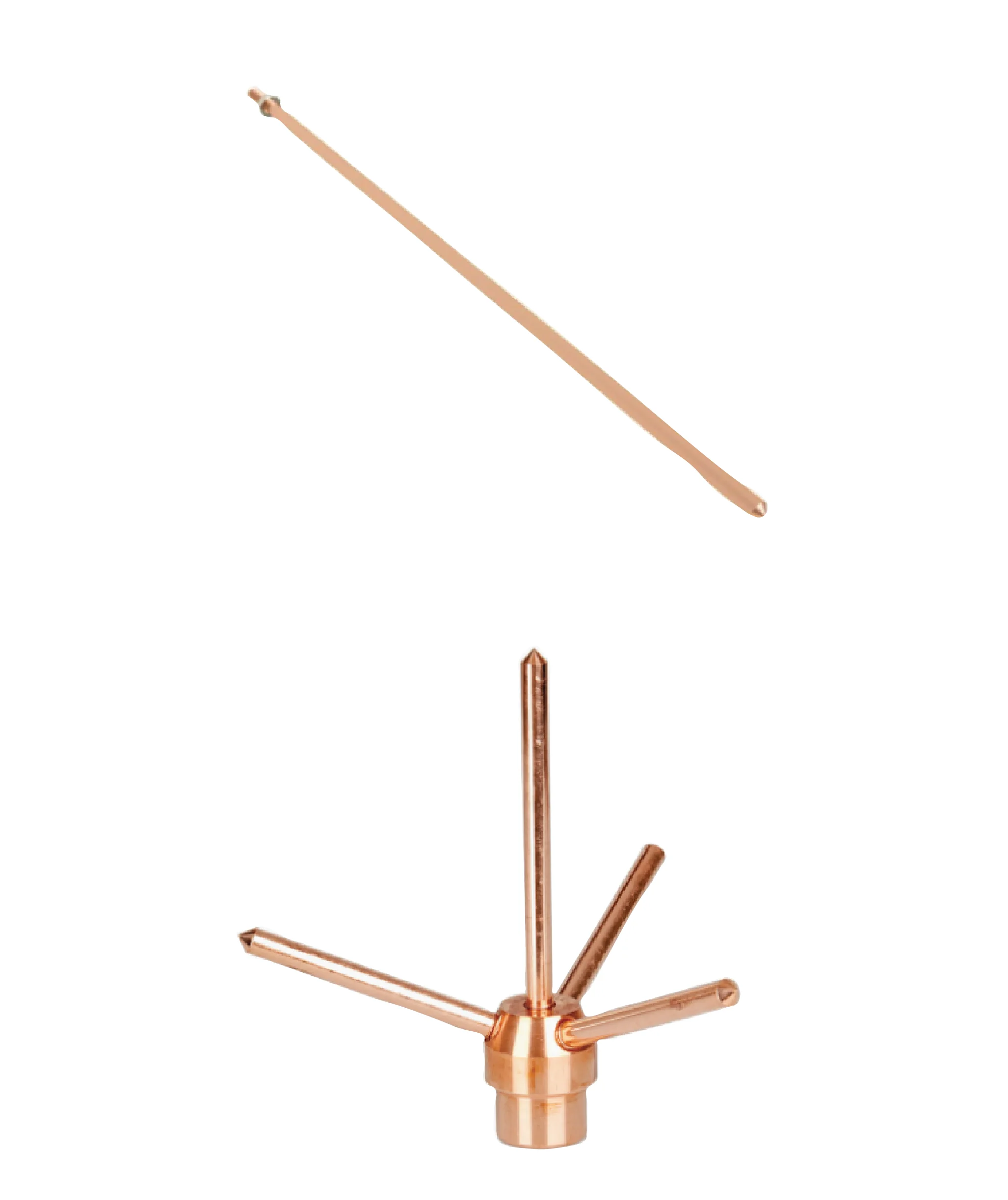
Particularly in the UK, since the introduction of BS:EN62305 part 3, the use of free standing masts has become more popular, especially to protection roof mounted structures such as air handling units.
Since you often find that lightning protection is the last thing to be installed, provision has not been made to “cast in” bolt foundations to secure the mast assembly to your roof. Yet often, to create the zone of protection that you need, in order to provide adequate protection, the masts can range from 3 to 8m in height. But the taller one goes, the more important it is to provide a stable base so that your mast does not topple in the face of high winds. To this end we provide the masts with concrete bases that you can easily carry and move into position. Thus providing a weighted base to provide stability to your mast installation. For our taller masts, we provide a tripod base, which adds further stability to your mast.
With ease of transportation, storage and physical handling in mind we at Kingsmill are about to bring you our foldable stainless steel tripod bases, which we are sure you will like
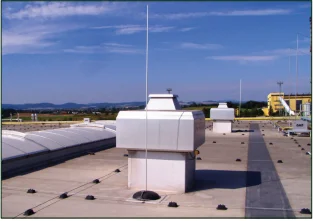
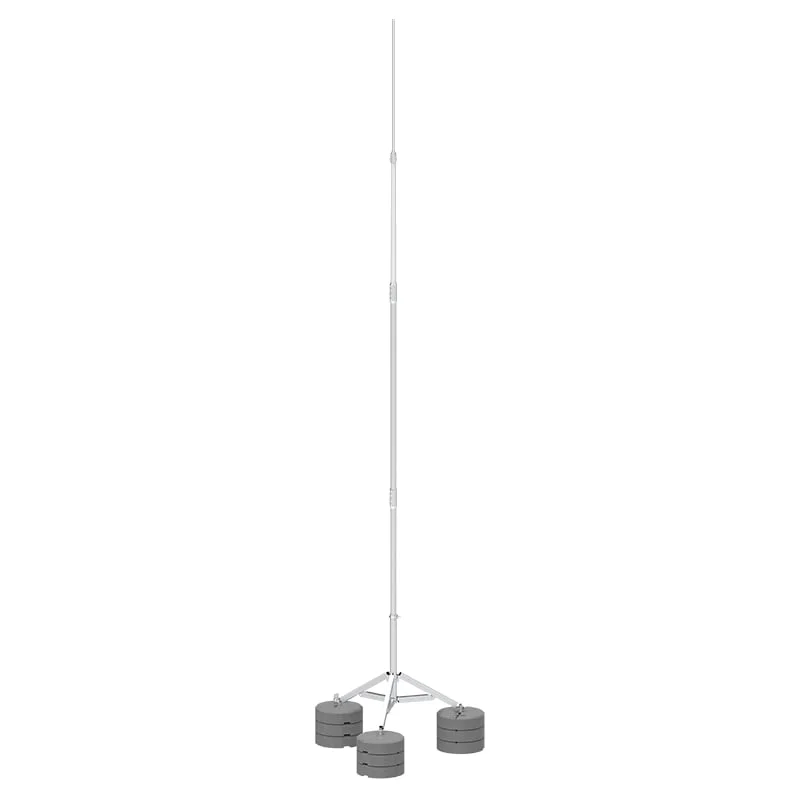
The picture illustrates one of the masts used in conjunction with an 8mm solid circular conductor, but we also provide fittings so that they can be used with 25 x 3 tape.
The Free-Standing Masts should be placed apart from the object to be protected on your roof. This distance is known as the “separation distance” and can be calculated using the formulae given in BS:EN62303 Part 3. The separation distance is there so that in the event of lightning hitting the mast, it does not flash over to the object/roof mounted plant that you are protecting.

In the event that there is insufficient space on your roof to allow for the free-standing mast to be installed away from the object being protected, then we can provide you with a further solution. That entails using a modified mast such as our Insulated Lightning Conductor, thus allowing you to move the mast closer to the object or even attach an air terminal to the object itself! Stay tuned for more about this in a future blog piece.
And just a little side note, if you haven’t already, check out our new Free-Standing Mast available for immediate delivery.

We are particularly proud to bring you this piece of innovation. In the past if you needed a very tall mast, your only choice was to use a heavy metallic mast, which requires large foundations and often heavy lifting equipment on site.
Our Lightweight Mast is made from a GRP composite material, that combines strength with relatively light weight. Its conical design gives the mast greater strength and rigidity in the face of strong winds.But not only that, you will find that it is corrosion resistant (whereas metal is not). The GRP composition is an insulating material, which goes some way to reduce flash over, and here is themost exciting and unique detail, the mast can be customised by colour or by adding graphics – for example camouflage, in the case of military installations. The mast to the right was used to protect an open roof area on a hotel in Qatar, and we have to say blends quite nicely.
The nice thing about this mast is that, providing this is built in, the mast can be directly fixed to the structure of the building, thus the building helps to provide the foundation.
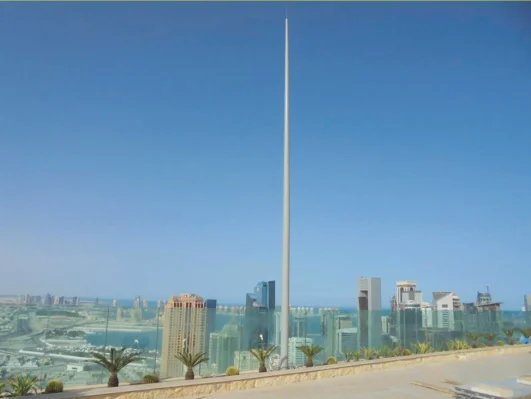
Speaking of foundations, it is important that you pay attention to the local wind conditions when installing either a free-standing or lightweight mast.
The velocity of wind changes according to terrain, altitude and geographical location. Strong gusting wind can snap and uproot large trees, so it has the potential to tipple and damage your lightning interception masts.
Our new range of Free-standing masts come in kit to suit a variety of wind speeds, and all you have to do is select the correct kit for the wind speed in your area.For our taller masts, we provide specific designs to suit your application, though our standard product is suitable for speeds of v = 22m/sAn example of a wind velocity map is shown for the UK.
So, in summary, yes we do provide a range of lightning masts, selection of which really comes down to your preferences and site conditions. We hope that the following table helps you with your decision making, and as always if you have any questions, feel free to contact us at [email protected] or any of our social channels!
